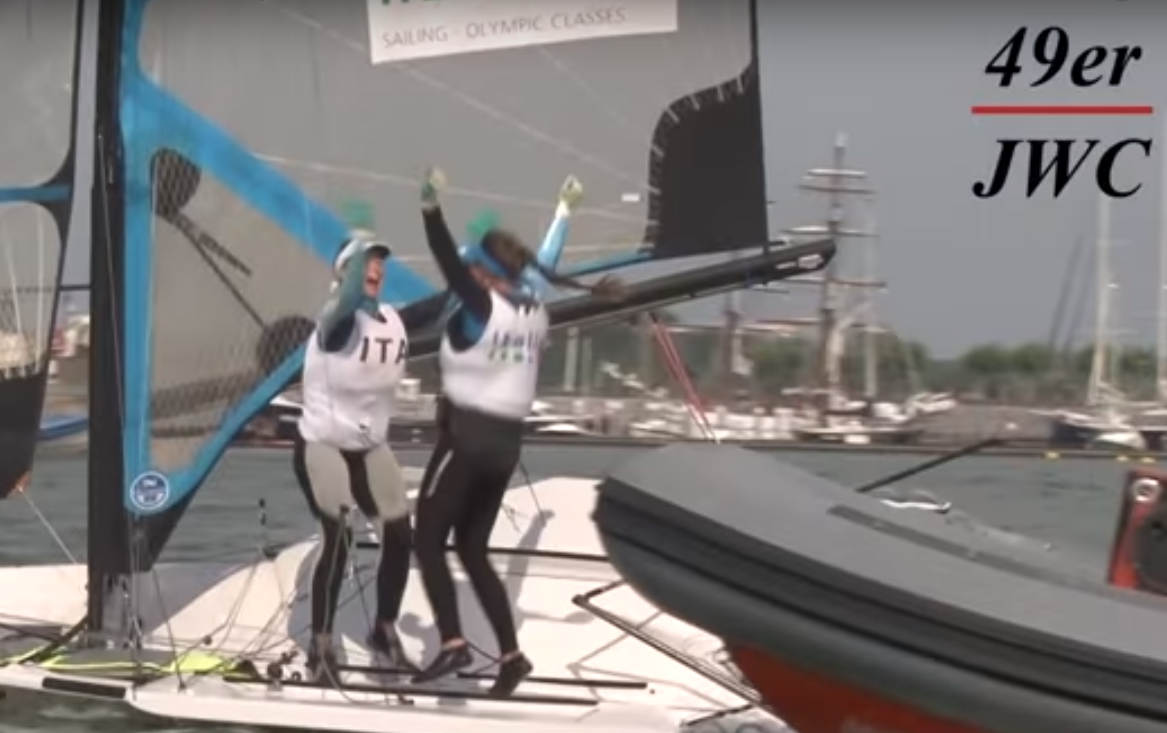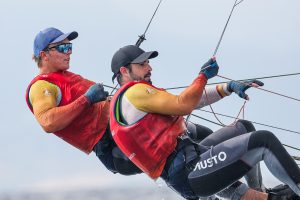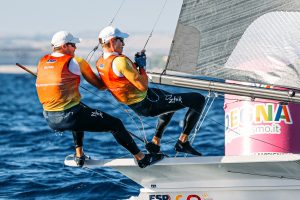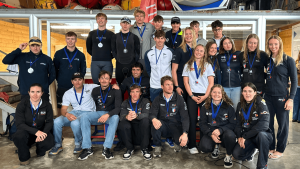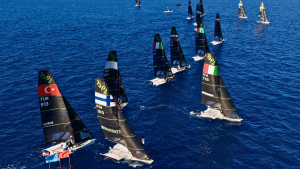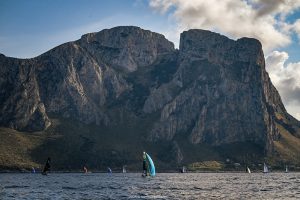Just after the Olympic games, the next generation of skiff stars lined up to see who was the best U23 team in the World. Like all events with the skiffs, both 49er and 49erFX were competing at the same time and in the same venue. Unlike other skiff events, the 2016 version became the first event to showcase significant numbers of male and mixed 49erFX teams alongside female 49erFX teams. Of the 34 teams competing 12 were all male, 4 were mixed and the remaining 20 were female teams.
When the 49erFX began, it was thought that beginner teams would use the boat as a stepping stone to get into skiff racing. Now that 2nd hand gear is becoming available, that is becoming reality.
In the top 8 final, 5 of the teams were female and 3 of the teams were male, but that wasn’t the real story. The real story was the Dutch squad approach to the event. It was a Netherlands hosted event, and the home country typically has good attendance, but with eight teams the NED was everywhere… well, mostly at the front.
The Dutch squad of ‘future star sailors’, as they call the squad, train together frequently switching crews and helms, male and female, and will make up the Dutch effort in 49er, 49erFX, and Nacra 17 in the next wave. Under a central coach they focus their work on core skills like individual motions through the boat, communication, compared to typical campaigns that spend lots of time on boatspeed via equipment development and tuning. Having double handed team members ensure they look after their own skillset rather than being set into a pair from an early age is atypical in Olympic sailing, as most teams stay together almost for their whole careers.
With a 1st, 3rd, 4th and 8th overall, the Dutch approach is sure to turn some heads at the Junior levels, and only time will tell if Holland can gear up to produce their first ever elite level 49er team in the future. No doubt overall winners Bart Lambreix and Philip Maijer were thrilled to take the win, even moreso knowing how many of their team mates they beat out;)
Slotting into second place at the regatta was Italians Ottavia Raggio and Paola Bergamaschi. This duo took the hitch a ride with the national side approach to learning skiff sailing. As national leaders Giulia Conti and Francesca Clapcich were out competing for titles at the senior level, Ottavia and Paola were invited along to train alongside under the tutelage of national Coach Gianfranco Sibello. The two young Italians have been in 49erFX for a little while, they only teamed up at the end of last year to form this budding partnership. They put in a lot of good work and got some top level coaching to prepare them for the championship. Check out the emotions release as they secure their silver medal in a very tight final.
These two strategies of pulling squads together and pairing with elite national sailors plays out over the rest of the top 15 (semi finals and finals). Sweden had three teams make the semi’s or finals, with Klara Wester and Rebecca Netzler finishing 5th, while both Denmark and Germany had top finishes through teams that work alongside their elite level national sailors.
As the Junior World Championships continue to become a more important part of sailor development, you can be sure performance managers around the globe will continue to watch out for trends. This year marks the first year 49er dropped the age from U24 to U23 to align with the 470 and Finn Classes. Nacra 17 remains U24 while laser and RSX remain U21. In all cases it is great to see competitive regattas for sailors beyond the youth age that can be used to transition through the college years and keep sailing ambitions alive and attainable.
The 2017 49er and 49erFX Junior World Championship is schedule for the end of June in Kingston, Canada, site of the 1976 Olympic games and home of the annual Cork Regattas. It is to be paired with a North American Championship, so travelling teams can get two high quality regattas under their belts in a single trip.

